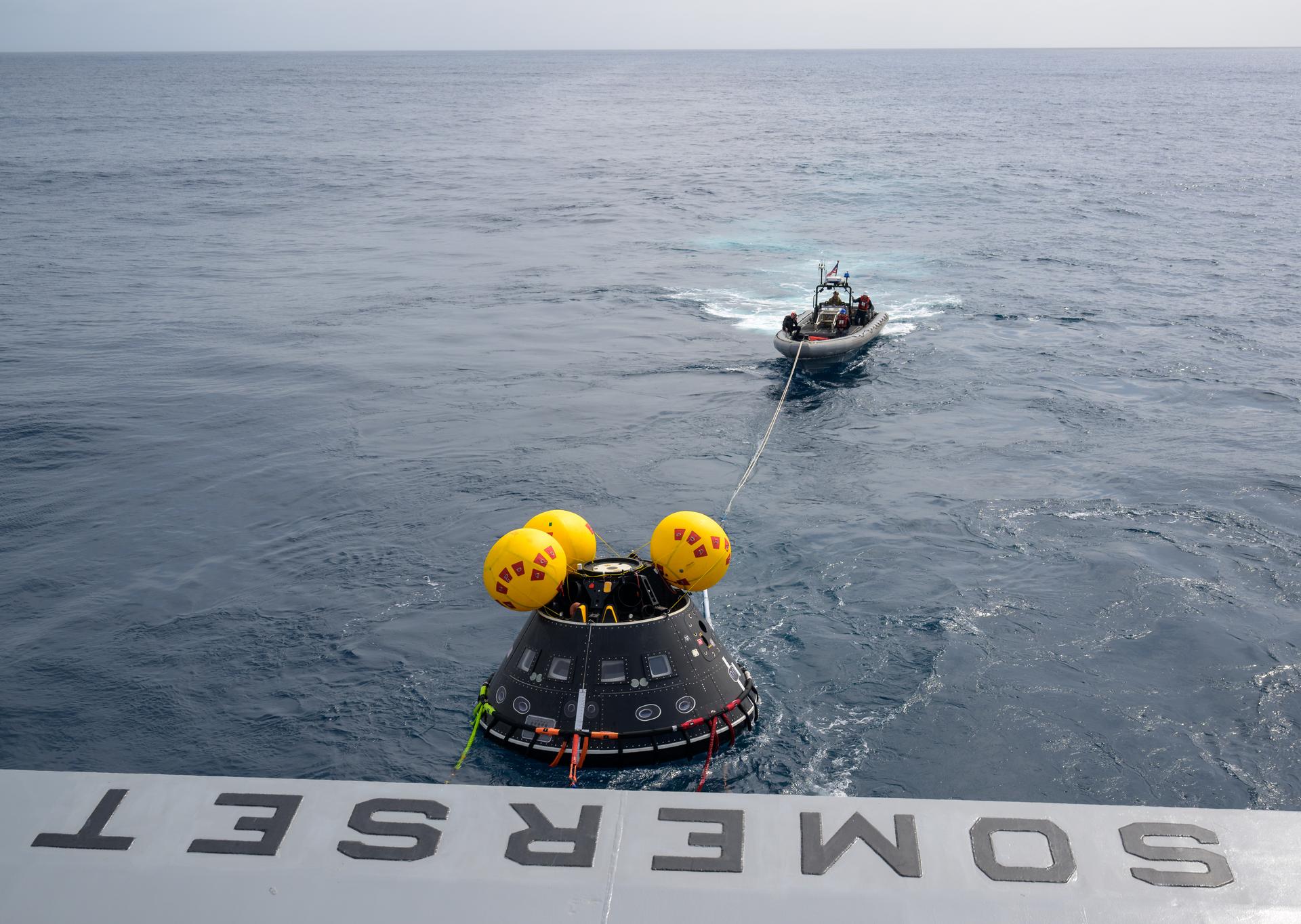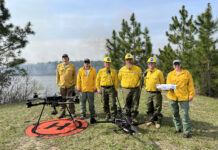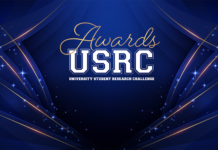NASA and Department of Defense Join Forces for Artemis II Recovery Mission
In preparation for NASA’s forthcoming Artemis II mission, a collaborative team from NASA and the Department of Defense recently embarked on a critical training operation. This joint venture, spearheaded by NASA’s Exploration Ground Systems Program, involved a week-long exercise aboard the USS Somerset off the Californian coast, where they rehearsed the meticulous procedures required for retrieving the Artemis II spacecraft and its crew post-mission.
The conclusion of Underway Recovery Test-12 (URT-12) marked a significant milestone. This test, completed successfully on a recent Monday, certified NASA’s Landing and Recovery team, along with their Defense Department partners, to carry out the recovery of the Orion spacecraft. The upcoming Artemis II flight is a pivotal test mission where NASA astronauts Reid Wiseman, Victor Glover, and Christina Koch, alongside Canadian Space Agency astronaut Jeremy Hansen, will undertake a 10-day journey around the Moon.
“This mission represents NASA’s inaugural crewed journey to the Moon under the Artemis program,” remarked Lili Villarreal, the director in charge of landing and recovery for Artemis II. “The extensive practice leading up to this week’s event, combined with the seamless execution observed at sea, instills confidence that our air, water, ground, and medical support teams are thoroughly prepared to safely recover both the spacecraft and crew for this historic endeavor.”
The Artemis II Recovery Plan: A Technical Overview
Upon reentering Earth’s atmosphere, the Orion capsule is engineered to protect its crew while decelerating from nearly 25,000 mph to a more manageable speed of approximately 325 mph. This deceleration is facilitated by an intricate system of 11 parachutes that deploy in a specific sequence, ultimately reducing the capsule’s speed to a gentle 20 mph before its splashdown off California’s coast. From atmospheric entry, Artemis II is expected to travel 1,775 nautical miles to its designated landing zone in the Pacific Ocean. This direct trajectory allows NASA to effectively manage the time Orion spends enduring extreme temperatures.
In February 2024, during URT-11, the Artemis II astronauts engaged in rigorous training exercises. They donned the Orion Crew Survival System suits and practiced a comprehensive array of recovery operations at sea, utilizing the Crew Module Test Article, which serves as a stand-in for the actual spacecraft.
A Collaborative Training Exercise
For the 12th training exercise, a new set of astronauts, including NASA’s Deniz Burnham and Andre Douglas, as well as European Space Agency astronaut Luca Parmitano, replicated these procedures. They transitioned from the simulated crew module to the USS Somerset, aided by helicopters, a team of Navy divers in small boats, and NASA’s open water lead—a technical expert and chief design engineer for all open water operations. Additionally, Navy and NASA medical teams rehearsed various recovery scenarios to ensure comprehensive preparedness.
Victor Glover, who will pilot Artemis II, commented on the benefits of such exercises: “Participation in these events, even when not directly involved in a mission, provides astronauts with invaluable experience by exposing them to a multitude of scenarios. Gaining familiarity with different systems and collaborating with ground control teams broadens our skillsets and equips us for future roles. It also permits astronauts assigned to a mission—like myself—to experience alternate roles. In this instance, I’m filling in for Joe Acaba, Chief of the Astronaut Office.”
Ensuring a Safe Recovery
Once the astronauts securely reach the ship for medical evaluations, recovery teams prioritize returning the spacecraft and its associated ground support hardware to the amphibious transport dock. Navy divers play a crucial role by attaching a connection collar to the spacecraft and securing an additional line to a pneumatic winch located within the USS Somerset’s well deck. This setup enables the joint NASA and Navy teams to tow Orion toward the ship. A group of sailors and NASA recovery personnel aboard the ship manually pulls some of the lines, aiding in aligning Orion with its stand, which securely holds the spacecraft during its journey to shore. After a successful and precise recovery operation, the ship’s crew will drain the well deck of water, and the vessel will navigate back to Naval Base San Diego.
The Significance of Artemis II
The Artemis II mission is an essential step in confirming the core systems and hardware crucial for human deep space exploration. This mission not only advances NASA’s capabilities for lunar surface expeditions but also lays vital groundwork for the agency’s future human missions to Mars. As NASA continues to push the boundaries of space exploration, the Artemis II mission stands as a testament to international collaboration, rigorous training, and meticulous planning, all aimed at safely and effectively extending human presence beyond Earth.
For more Information, Refer to this article.


















![Samsung’s Breakthrough Fuels Progress in Science and Industry: Interview How Samsung’s Engineering Feat Became a Catalyst for Scientific and Industry Advancement [Interview on Real Quantum Dots Part 2.]](https://www.hawkdive.com/media/samsung-tvs-and-displays-samsung-quantum-dots-technology-qled-tvs-quantum-dots-experts-interview-par-218x150.jpeg)














